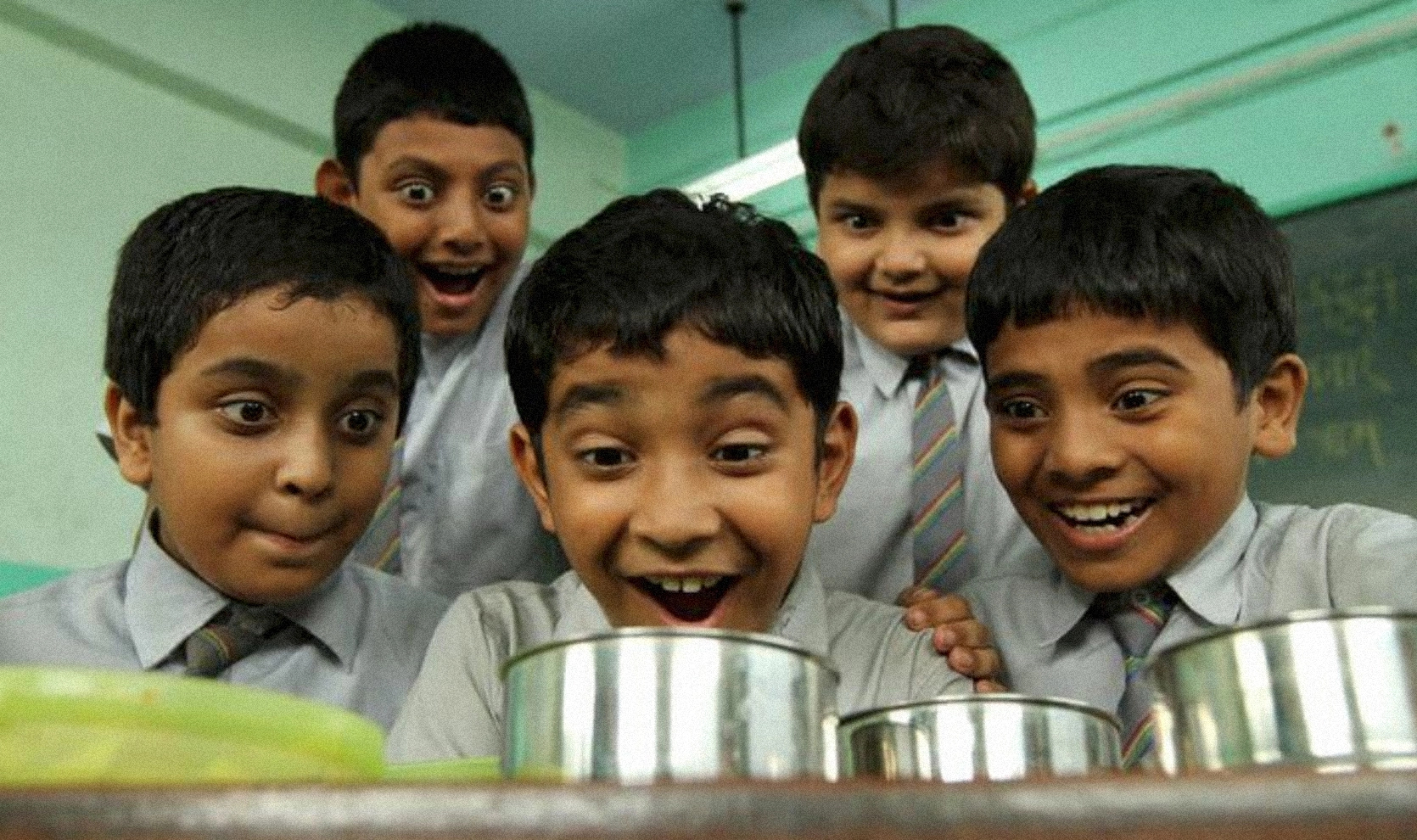
One afternoon, during my school years, I had to skip lunch because I had not carried any food with me — the reason eludes me now, and being a conscientious child then, I did not spend any money on the canteen tuck. During the second short break, I was called to the ‘shed’ where we students ate and played, and I found my mother, an extremely busy gynaecologist, waiting. She had rushed there from the hospital to bring my lunch to me.
Having metaphorically stepped into her shoes, as a working woman who is also catering to her family’s various needs — so what if my kids have grown into strapping young adults and one of them has married and flown the maternal coop — I find myself, with unfailing regularity, facing the question, ‘What do I fill in the dabbas tomorrow?’ And, as I complete my daily morning routine, I continue to realise that their importance has not diminished since that day my mother dropped everything to make sure I was fed. Not only do the contents of the dabbas satiate hunger, they are also indicative of the care and concern of the person who fills them. So, even though my table laden with multiple boxes is often the subject of conversation — my family thinks I am obsessed with them — I know that on the days I am not around, those boxes and I are sorely missed.
Just a few weeks ago, during one of my night-time bingeing sessions, I re-watched Stanley Ka Dabba (SKD) — a movie that, as its name suggests, revolves around a lunch box. Even during a second viewing, it moved me with its story of a student and his experience of hunger. Stanley, who comes to school with no dabba, becomes the target of the greedy Hindi teacher Mr Varma, who scours the lunch boxes of his wards for food. Stanley and his friends play hide-and-seek with the khadoos teacher at lunchtime to elude his gluttonous eye. Stanley’s grit and self-respect through his deprivation — hinted at, but not really spelled out till the end — is remarkable. He, as we learn towards the end of the film, is an orphan living in rather impecunious circumstances. The boy is unwilling to let his friends know that he is unable to bring a dabba to school, so in some of the lunch recesses, Stanley pretends to go home for his afternoon meals. He boasts loudly that his mother will be serving it hot for him and that is why he is not partaking of his friends’ tiffins any more. And sometimes when he continues to come to school without a dabba, he spins a believable tale about how his mother has accompanied his father on a work trip, and ends up sharing a meal with the other boys. Though they come from different backgrounds, their obvious camaraderie speaks eloquently to a more equal world that often finds itself lost in adulthood.
The movie had released in 2011, and the producer-writer-director Amole Gupte, who also essays the role of Varma, is, I realise, quite surprised by my sudden interest in SKD. But it takes very little time to get him enthused about discussing the film again, more than eight years later. Soon, our cast for the day is, well, cast and gathered at the Gupte residence where Amole lives with wife Deepa Bhatia and son Partho, also major participants in the movie’s making. Divya Jagdale (the actor who played Mrs Iyer, the science teacher), Amol Gole (cinematographer), Deepa (co-producer and editor), Partho (actor who played Stanley) and Amole are ready for the afternoon’s ‘chatathon’. There’s still a strong collaborative bonhomie when the five get together, and our rapid exchanges are peppered with banter and serious analyses as the conversation draws out opinions on the film-making process, child labour, Bollywood, eating habits, cooking and more….
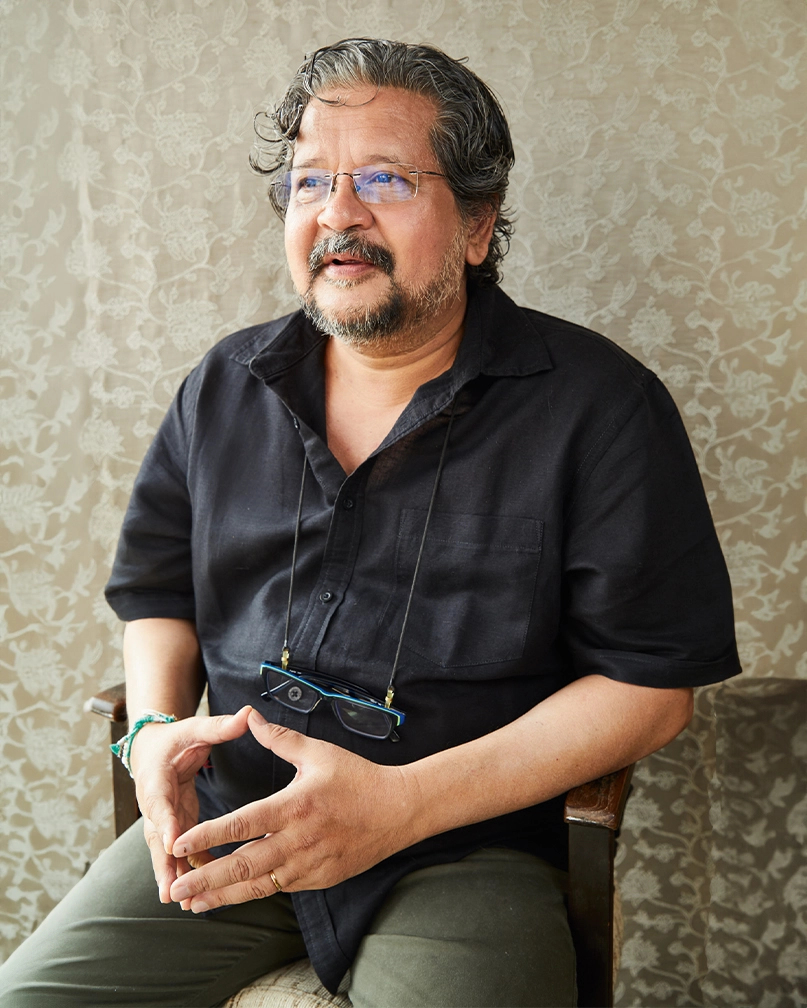
Take 1: Amole Gupte used the memories of his own school days as inspiration for a story that tackles the dynamics of inequality
Amole: I wanted to make a film about hunger. The central ‘protagonist’ of SKD is the dabba — a physical representation of food that is a counterpoint to the key issue, the hunger in a child’s stomach, which is cleverly camouflaged by the egalitarian school uniform. In fact, we shot at the Holy Family High School in Andheri where I studied. Since its building was small back then, the classes were held in shifts. The morning shift was for the 5th to 11th standards, and the younger kids came in the afternoon. Then an annexe was built, and suddenly we had to bring an extra dabba as school had become full-day. This opened up a can of worms — like in the film. Just think, on the one hand there was a poor child who used his 10 paise to eat a small plate of ragda (chickpea gravy, often served with cutlets) for lunch, and on the other, there was an Aman Mehra who arrived in his old Datson or Ford car and carried a multi-boxed lunch. And there was also a Stanley who lived in the slums. On the road near his home, there was a small hotel where taxi drivers lined up to have their morning nashta (snack). Stanley had befriended the hotel guy and would get a dilapidated dabba that had four puris and aloo ki sabji (deep fried Indian bread with potato vegetable), every day. When he opened it we would get the smell of the food. Another boy’s tiffin gave out the khushboo (aroma) of theplas (a typical Gujarati flatbread). In my time, the rich and the poor went to the same neighbourhood schools, so empathy developed between the kids, and we shared everything. And I felt that the experiences of the students of my school days had the germ of a story of deprivation that needed to be told.
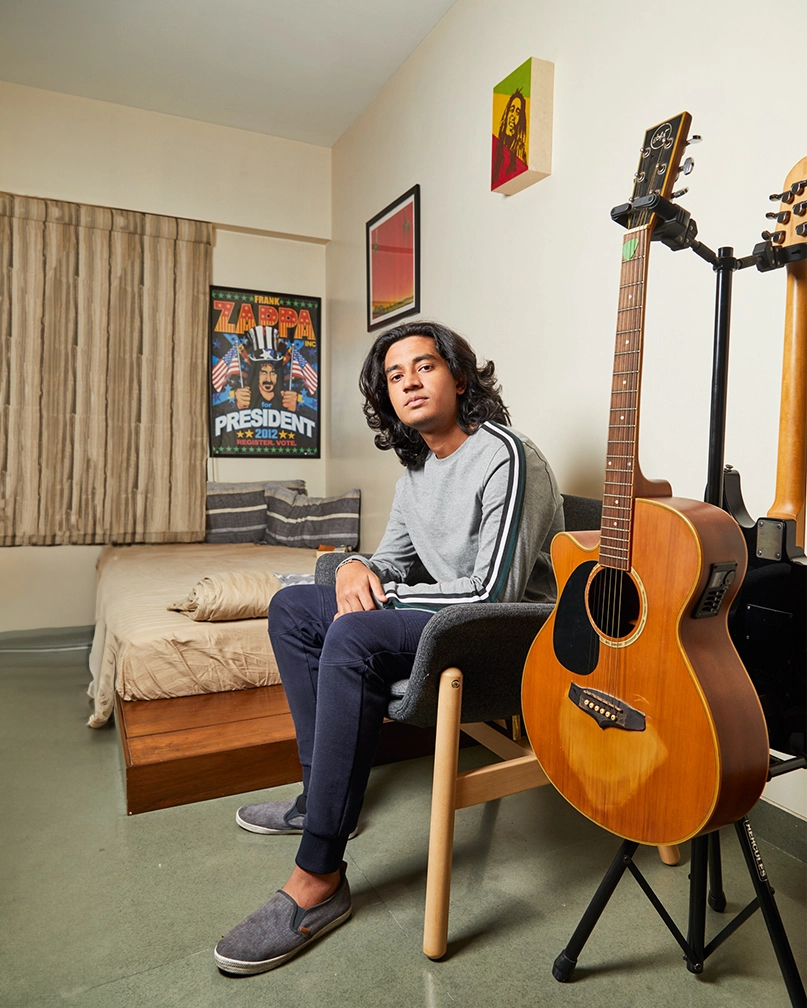
Take 2: The cast and crew broke from the conventions of structured film-making and made their own rules as they went along
Amole: Amol, our cinematographer, was a great collaborator; he had assisted me on Taare Zameen Par (TZP), and we subsequently worked together on Deepa’s film Nero’s Guests. Even though it was a film with children in it, TZP had been made in a very structured format — to the extent that it was quite asphyxiating. There were too many people. I wanted to free my film from everything. So, I thought, ‘Let’s not have a budget for this film. Let’s not have a crew’, in the conventional sense. When we started thinking about SKD, I said I would go and speak to the principal of my old school. And that we would do four-hour workshops there every Saturday and shoot the film during these. We were indulging in an experiment — we were not promising ourselves a film, because in such a scenario, you would be trapped in all the regulations of how to make a Bollywood film.
Amol: Today, it is SKD, the film. But, to tell you the truth, it was not made like a normal one. For the children, the Saturday sessions were art workshops. For us too, they were the same. We went in every time thinking, ‘Chalo, let’s see what happens today.’ I saw that the process was the goal, and my wiring happened there. SKD was my university. Today, I have no fears as far as film-making is concerned. And people call me when they have a challenging task at hand. And there were just a few of us there….
Deepa: There was Amole, and Amol, one assistant, two interns and our driver who functioned as a spot boy. He used to go pick up the snacks for everyone, get tea and run other errands.
Amole: And as for picking the cast, I didn’t conduct auditions. So, whoever came for the workshops was welcome. And the kids were free to come and go as they pleased. We shot with whoever was present.
Divya: At that time, my son Jahaan was studying in the same school as Partho. One day Amole asked me, ‘Science teacher ka role karegi kya meri film mein?’ (Will you play the role of the science teacher in my film?) Though I was a sleep-deprived mother I said, ‘Yes, I will do it.’ And that was it.
Amole: Taking Partho for me, was a no-brainer. Two years before we started SKD, he had performed to Aaja aaja dil nichode, the pithy song from Kaminey. Watching him doing that — I still have his performance on my computer — intensified my desire to do a film with him. He had been my cue master in TZP. During TZP, I didn’t want the children to meet each other during rehearsals, so I would not let the two brothers Ishaan and Yohaan (played by Darsheel Safary and Sachet Engineer) come together. When Darsheel came for a rehearsal, Partho played Yohaan, and when Sachet came, he became Ishaan. Partho knew all the lines; I saw that he could say them with the right emotion. And he proved himself in SKD.
Partho: Working with Mom and Dad was a lot of fun. Now that I have grown up and am a sophomore at The School of Cinematic Arts at the University of Southern California (Los Angeles), I understand what intense work is. But, then, it was more fun and games for me. I was just doing something I enjoyed. It was a breeze because we shot for just four or five hours, on weekends, mostly Saturdays, with two breaks.
Amole: Till Fox Star Studios became our partner, it was, I would say, a free film. It opened the gates for free film-making. People began to think that if a fellow can do a full feature (film) with songs sung by Shankar Mahadevan, Vishal Dadlani, Shaan and Sukhwinder Singh, then others can too. Shankar Mahadevan’s fee for singing Dekho ek nanhi si jaan was that I should cook mutton for him and take it to his home in a pot. And I did that.
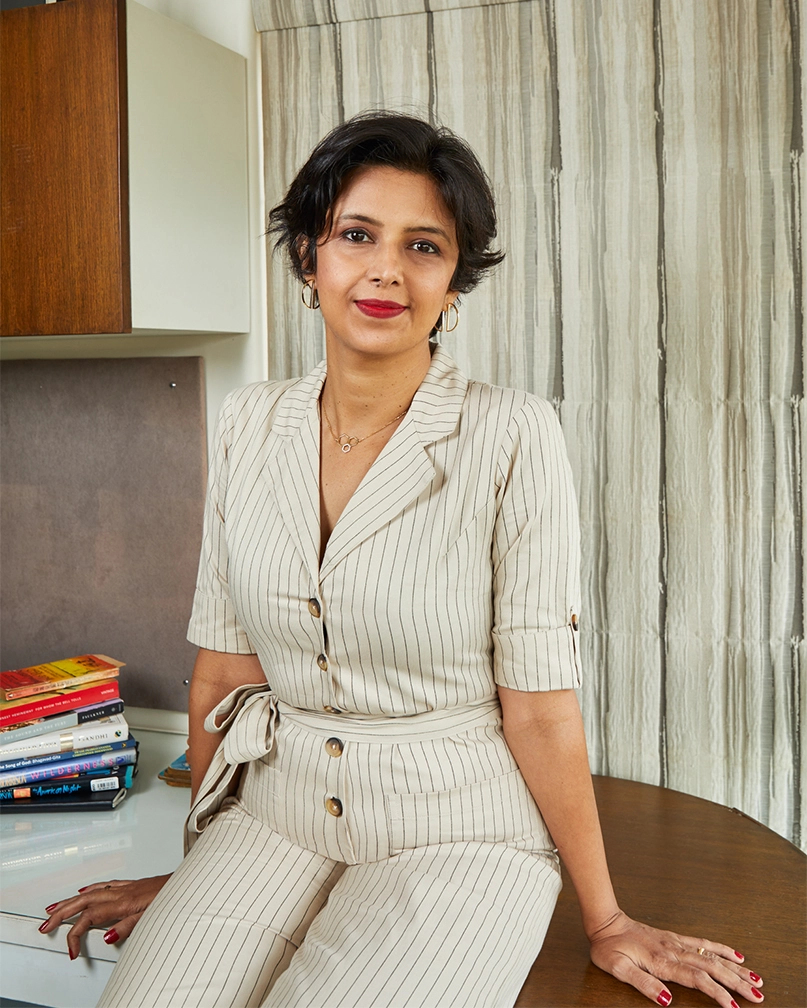
Take 3: With no script or character sketches provided, the actors had to put their improvisation skills to the test
Divya: When I reached the sets on my first day, Nyla (Masood, costume designer) got me ready. I kept on asking what I was to do. Finally Amole told me that I had to go into the classroom and meet the children. Can you believe, I didn’t know what the scene was, what my lines were, nothing! I just knew that I was the science teacher. Being a theatre performer, I felt as if it was the first rehearsal of a play. Amole was sitting in one corner, and Amol was in another. I waved to Amole and he yelled, ‘Action’. I walked in, to pin-drop silence in what had been a noisy classroom. I wondered what had happened.
Amol: The kids had been told that someone who was khadoos was coming, but Divya, like the other adults, had to play it by ear. Seeing the students’ reactions, she got into character.
Divya: The way we shot was organic. Amole actually spoiled me by not telling me anything. Now, when I am doing new projects, I feel that I do not need more information about what I have to do.
Partho: We did not follow any script; there were no rigid scenes and no structure. We were given a basic brief. We were told that, say, the science teacher was strict or the English teacher was cool. The vibes that each moment gave out helped us to play out our parts. Also, in conventional film-making you set up and embellish stuff, so that it looks better than real life. Dad uses the camera only as a device to capture what’s going on; there is no artifice. So what he gets on camera is very fresh, almost documentary-like.
Amole: The first time when Divya Dutta (the English teacher) came to me, she asked me for her script. I gave her the fourth grade English textbook. I told her the children knew their work because it was the actual textbook. I asked her to prepare and return, as the next day she would be conducting an English class.
Divya: I loved my entry, when the character fell into place. And another scene that I will never forget is the one that has Jahaan in it. One day, Amole called and told me the shoot had been cancelled on that day, and I would need to shoot the next day. I told him that I had to look after Jahaan….
Amole: I asked her to bring Jahaan, saying ‘Usse bhi scene karwaenge…. (We will do the scene with him as well.)’
Divya: I thought he was joking. But being a harrowed mom — I didn’t have a maid — I brought him along with me. Jahaan sat on my lap as we shot — the principal talked to him, and what he said has been retained in the final scene.
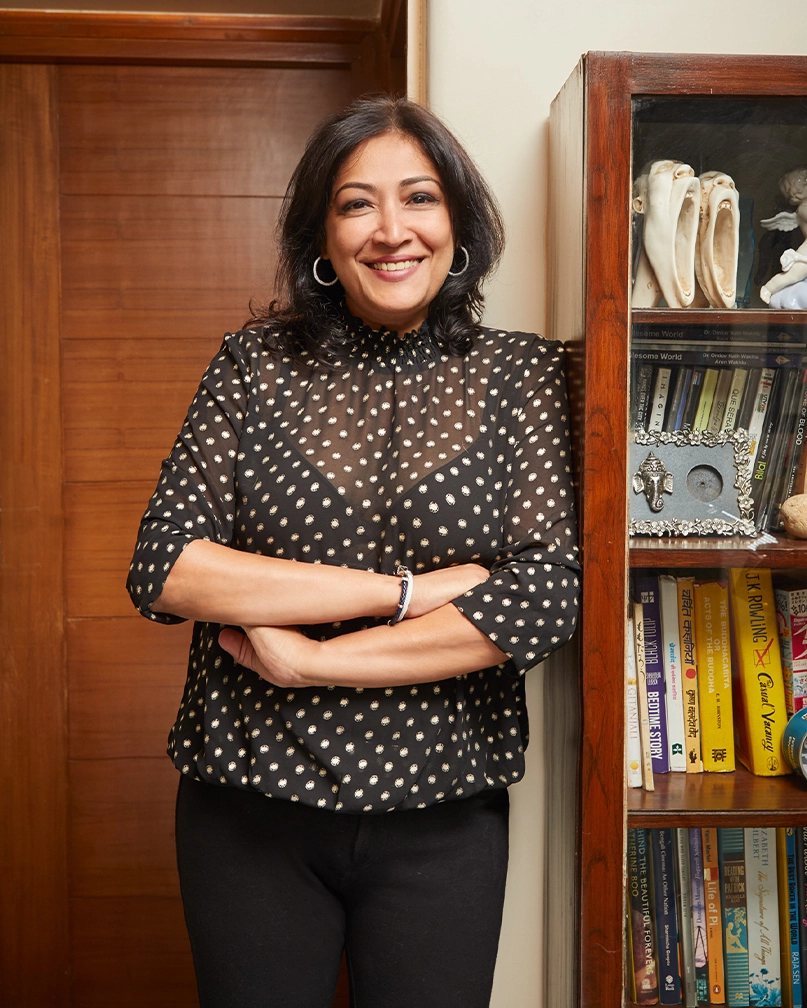
Take 4: The director and cinematographer moved in tandem, expertly complementing technical know-how with innovative thinking to pull off a cohesive film
Deepa: Amole knew the arc of the narrative absolutely clearly. But he also knew that SKD was not about a plot. It was about portraiture. He wanted moments. He would bank sequences without saying ‘this should follow this’. He had his beats, but the way of getting those beats was something none of us had experienced.
Amole: The film took shape on the editing table.
Partho: How we created a cogent narrative without a script is beyond me. When I saw SKD again a couple of years ago, I realised that, technically, it is a marvel. Amol shot on a Canon 7D which is not even a full-frame camera. But there was no noise. The burn outs are also very well done. I didn’t see a single bounce or a flex. And the scenes where Varma is walking through the corridor frantically searching for Stanley and his friends — it feels like a full school at lunchtime, even though we had only 25-30 students on the set on those days. It was all about how Dad placed each person and how Amol and his camera were moving. They choreographed it brilliantly.
Amol: It would not have been possible with any other camera. Half the time I shot the scenes with my Canon 7D, sitting on the benches with the kids. I had an old tripod, and I had removed its head and slung the camera belt around my neck. I held the camera with my right hand and focussed with my left. There were no lights. You know, I came to SKD from a totally different background of Bollywood publicity stills that needed perfect shots, often captured after multiple tries. In SKD, I unlearned everything. When Amole Sir was standing behind me, he could see what was happening. But when he was performing, it all came down to what I shot. We trusted each other.
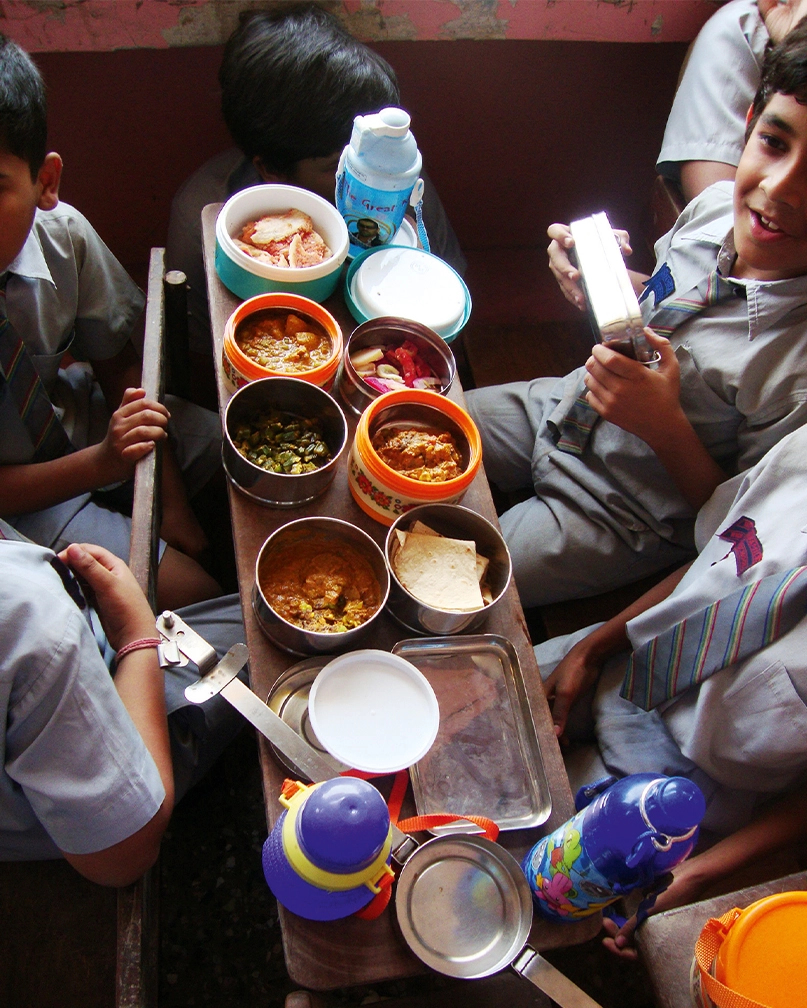
Amole: I had two arms while shooting — one was my namesake with the Canon 7D camera. My other arm was national award-winning sound engineer Madhu Apsara, who recorded the sync sound innocuously, without any sound lock-up. You normally have guys shouting ‘silence’ but by the time you get the silence, the children have waned. Madhu strapped the Sennheiser mics not to the children’s clothes as is the norm, but to the desks. The children were not strapped.
Deepa: The children performed freely and Amol shot without a focus puller, relying on his instinct to judge the focus.
Amole: We did not give any child a focus mark that would tell him that he should look here or there, and we did not have a monitor on which we could determine if the take was okay or not. We just moved gracefully because we didn’t interfere with the children. The kids were doing their own thing and we were doing ours. And we worked with what we got.
Deepa: For example, for the scene where Partho enters the school for the first time, the first shot was taken. Amol’s hand was injured. So, there was a slight shake in what was shot. Amole said they would reshoot it once Amol’s hand improved. And they attempted to do it thrice. But I finally used the first shot, because its purity was precious. We stabilised the shake a little in post, and that was it.
Amol: SKD is a painting, and no one can paint it again. If I am asked to shoot SKD one more time, I will not be able to do it. It’s like a Sehwag ka square cut-wallah six. Woh us tarah ek hi baar hota hai. (Something like that can happen only once.) And I went with the flow. There was an auto cut on the card at 11 minutes, so each shot continued till the card cut it. And finally it was Deepa ma’am’s magic that worked. I still remember, after about 12-14 workshops, the first scene that was cut was the vada pav scene — the initial one where the boy opens his dabba in the class.
Deepa: And later, when you see the dal boiling, and chilli powder and coriander being added to it, you honestly want to reach out and taste it. They shot the food scenes by going to people’s homes and capturing what was actually being cooked that day. The individual personality of each kitchen lends the scenes their distinctive smell and flavour.
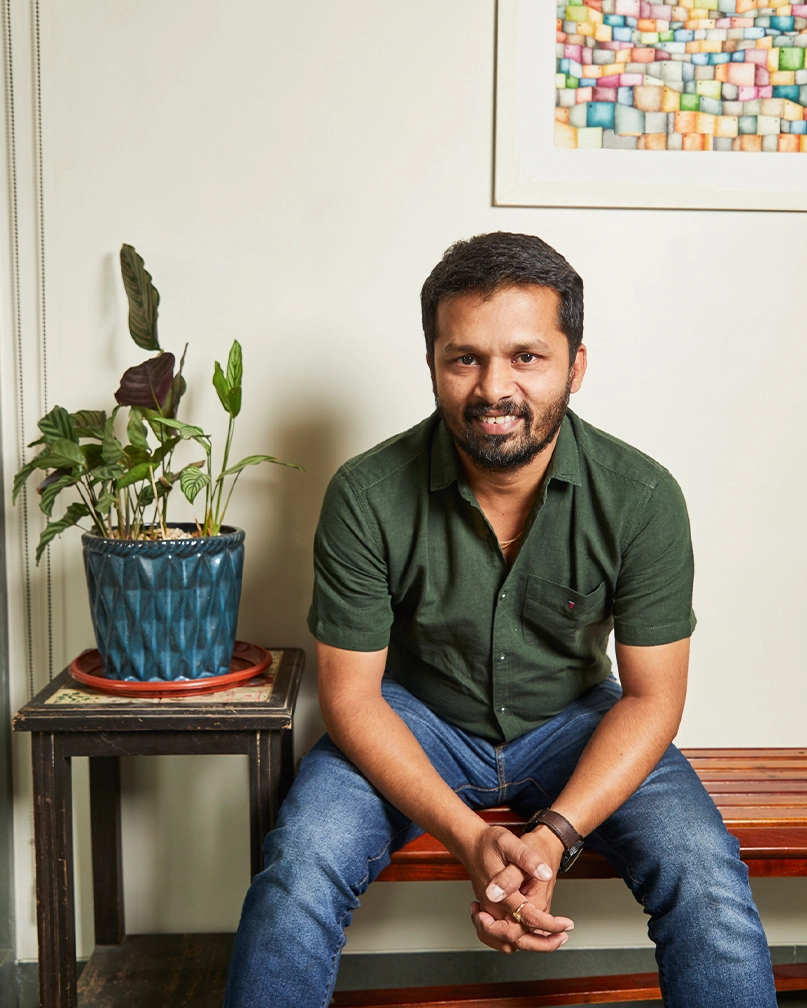
Take 5: The children were the centre of the action and they brought a sense of unpredictability to the shots and, consequently, the screen
Amole: You have to keep the child in you alive. If I am a painter, I cannot be making the same painting over and over again. Every new painting will start from zero. But in the movies, a new project never starts from zero — you are expected to do bigger than your previous film. But I prefer to start from scratch. Bigger is not necessarily better.
Deepa: In India, when you are working with children, we tend to push some issues under the carpet. We go to America and shoot with children for only four or five hours at a time, following the SAG (Screen Actors Guild) rules, but we return here and shoot with them for 10 to 12 hours. I appreciated what Amole did — he put his money where his mouth was. SKD is a little story with a big heart. Coming from my background of documentaries, I felt proud and privileged to be a part of a film like that. More power to Amole, for putting these ideas out there. All of us came together in that spirit of working together. And eventually the film reached somewhere and the trust in Amole paid off.
Amole: I used to do workshops with the poorest of the poor, in a municipal school which only had a fan. The children would knock off to sleep while watching films like Pather Panchali, even though they were interested. But perhaps that was the time they got some breeze on their heads. In SKD, my Stanley is the early boy in the class. His parents were Christian, so he stands for a minute in front of Mother Mary, looks at the early morning footballers practising, goes to his classroom and does all his homework, and then falls asleep because the night has been oppressive and he is tired. Then the peon comes in and wakes him up, every day. The first bonding of the movie then happens — the friends enter and he breaks out into song, Aaja aaja dil nichode!
Divya: Working with children the way Amole wanted us to, random things used to happen.
Amole: To me the whole film has its moments. But the final concert took some planning to pull off. Partho was the only child from outside Holy Family School so that is how we shot during the Saturday workshops when he didn’t have his own school to attend. And while shooting SKD, I was simultaneously producing a concert for Partho’s school, writing the songs and creating the music. It required around three months of rehearsals. For the final concert scene of SKD, I wondered where I would get 1000 parents who are actually watching the annual day of a school. So, we shot the real concert of Partho’s school at St Andrew’s Auditorium and the SKD teachers turned up along with the actual parents.
Deepa: There were five, six cameras rolling at the concert as it was happening and it was all done in one take. If something had gone wrong then, we wouldn’t have got the concert at all.
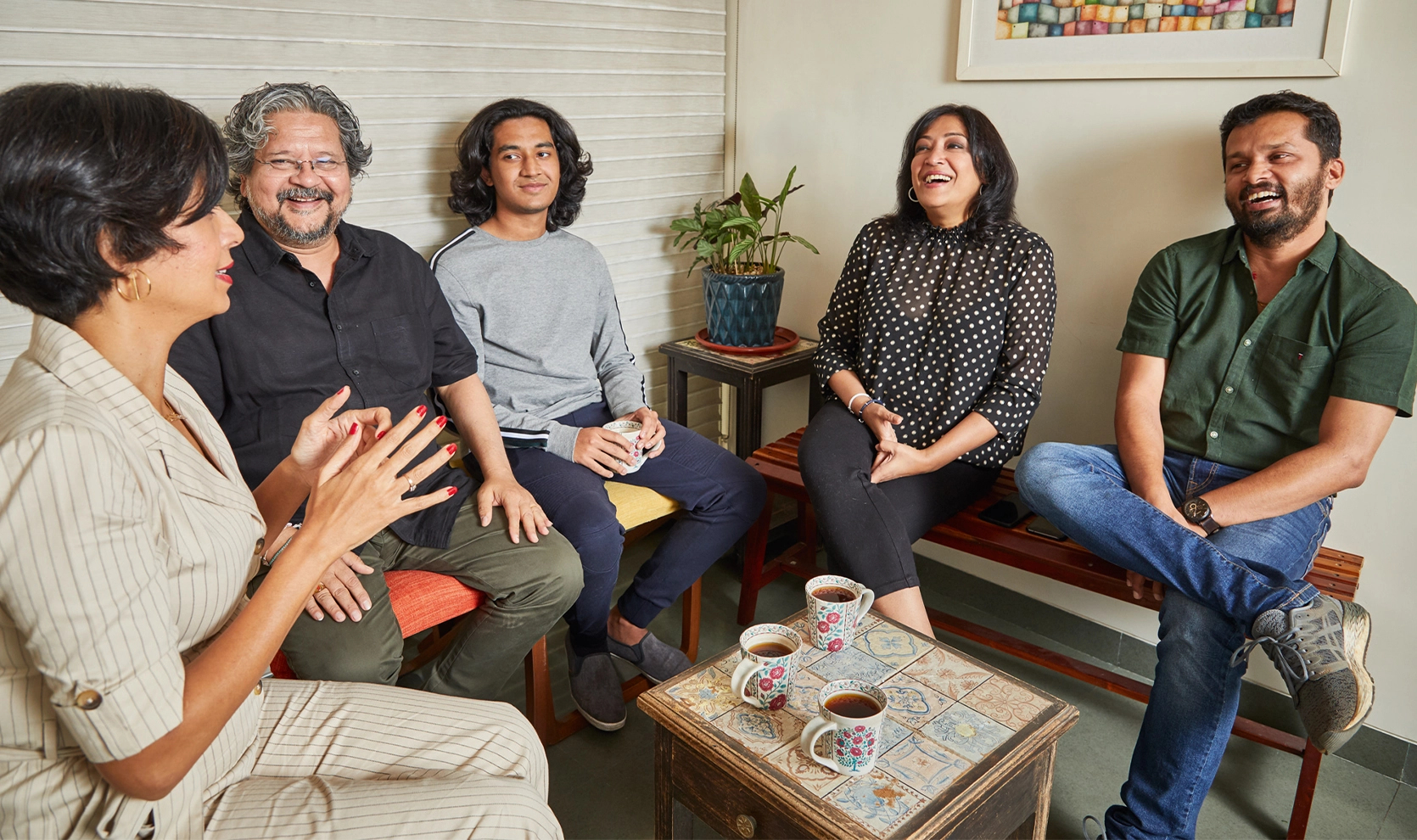
Take 6: The real-life connection to food and opinions about gender stereotypes in the kitchen are strong
Amole: Well, I can honestly say that I eat to die, not to live. For me, everything starts and ends with food. The kitchen is my most favourite place. And I believe that if you can make a good cup of tea — the chalta hai attitude will not work — you can make a good film. You have to enjoy doing both. That is my mantra and which is why I say that I don’t think I have worked in my life.
Amol: I’m a complete mama’s boy — she is my Annapurna, so I hate eating out. Even if I reach home at two in the morning, I eat at home. No one can replace Aai’s food in my life, not even my wife. She’s that good. I love her methichi bhaji (a vegetable made of fenugreek), shengdanyachi usal (a Maharashtrian dish made with groundnuts) and the misal (a Maharashtran dish which is a mixture of sprouted beans cooked with tomatoes, onions, coriander and crunchy noodles/sev in a spicy gravy and served with pav/bread). When she prepares the misal, she gets up early at 5 a.m. and puts everything to boil. She goes through a proper process; it is that spiritual for her. She still uses a pata-varvanta (mortar and pestle) to grind the masalas and the food turns out so good.
Divya: In my maternal home, we always ate at the dining table. Even if it was, you know, just kaddu (pumpkin) and lauki (bottle gourd) it was always served in proper dishes. Even now in my house, food is always eaten at the table. Then you have to pick up your plate, rinse it and keep it in the kitchen sink. This inculcates a sense of discipline. But my food journey is very pan-Indian. My mother is a Kashmiri. My father is half Kashmiri-half Maratha, so I’ve imbibed a little bit of both the worlds. And now, marriage to a South Indian has added another dimension. I grew up on non-vegetarian food but currently I am completely vegetarian. I creatively explore options in the kitchen, discover recipes, try them out and share the dishes with four or five people to figure out how they taste.
Amole: If there is anyone who can replace my mother’s food, it is me. I am the kitchen boy. I cut gender out of making food. All men eat heartily when served by their wives or mothers. But politically, I would like to free at least the space that I live in from that ideology. I think every mother should tell her daughter that she shouldn’t cook. If things have to change in our country, that rule should be followed in every home.
Deepa: Perhaps the boys have to be told that they should also learn how to cook.
Amole: If the daughters don’t cook, the boys will have to cook.
Deepa: What you are saying is akin to throwing the baby out with the bath water. If you want an equal partner professionally then you have to also be an equal partner domestically. All work should be divided so that there are no slotted tasks for men and women. So, whoever is home early gets into the kitchen and tosses up a meal.
Amole: My mother was working for 42 years. She cooked twice a day for us. We were two boys and we would wait for her to come home. We’d often make a basic potato patty so that we could serve it to her hot. Having a working mother turned our kitchen into a lab. And today, I am the cook in the house. I can cook for 30-40 people at a go — and my speciality is mutton curry. My mother gives me utensils for my birthday as gifts.
Deepa: I had a bit of a reverse situation in my household. My mom was a homemaker. Typically she should have co-opted us into the housework, but she didn’t teach me or my sister any cooking. She didn’t let us do any of the housework. But when she began working with my father, we started to help her out solely because we loved her. Cooking for me was a symbol of oppression in some ways because my mother saw it as coming in the way of our education. My father would always help her. It was a very, very beautifully democratic household. As we grew older, she started actually cooking really well because she realised that as kids grow up they demand good food. By the end of it Mom was an amazing cook. So, for me any talk of food is an association with Mom first and then with Amole.
Divya: Many men are not proactive. And ironically, because women are smarter they end up doing more work.
Deepa: That is also because a lot of women don’t ask for help.
Amole: It is as if it is written into their blood code, how can their husband go into their kitchen? I come from a family where a lot of males cook. The eco-system is positive towards men cooking.
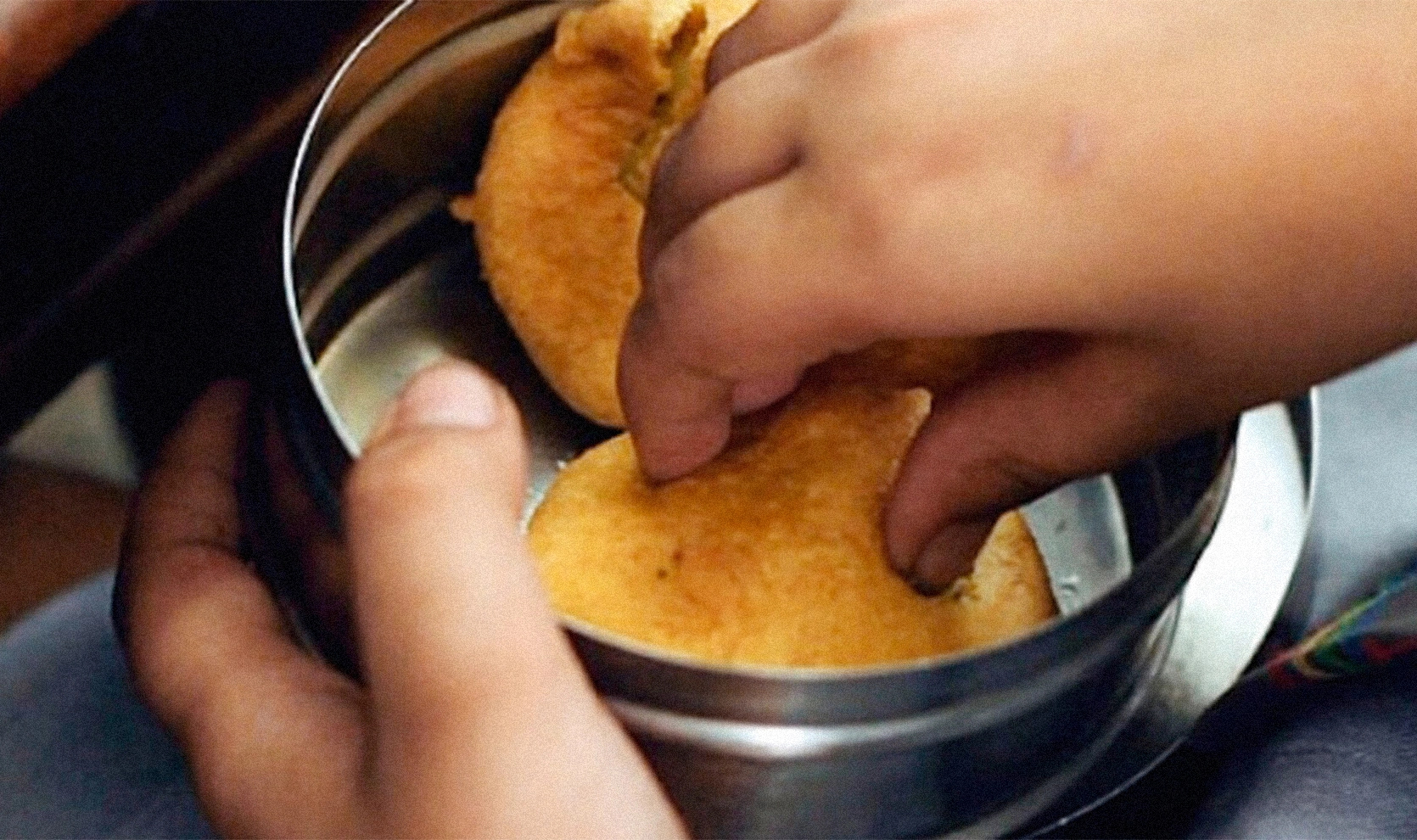
Take 7: The movie’s strong and necessary message of child labour and hunger keeps you thinking long after the end credits have rolled
Deepa: Stanley has a certain dignity and self-respect, even though the circumstances his character lives in don’t actually allow for that. We infer that Stanley and ‘Khadoos’ (the Hindi teacher’s nickname) are reflections of each other. They are two people in the same situation. Stanley could grow up to be this man. The way they are depicted reflects Amole’s eye of looking at adults and children. He is kind towards kids and harsh towards grown-ups. The Hindi teacher comes across as gross while eating. And yet there is redemption at the end. He is a victim of his own story. You don’t see his back story, but you do wonder, is there no one in his house who could give him a dabba?
Amole: For me, the depiction of hunger was important. And I had the faith that Partho could actually shoulder the tragic story of a hungry boy. The sight of a child going and drinking water to kill his hunger pangs should kill you. I don’t think anyone can forget the shot of Stanley gulping down water from the bathroom tap before he is spotted by the Hindi teacher. And you should also have no reprieve after seeing that shot and the unfolding of the end. After the final concert, Stanley’s principal drops him to a corner near his home. The boy walks into the restaurant owned by his uncle and after being yelled at by him, goes and works with Akram (the cook). After finishing their work, they quickly share a meal and then begin cleaning the place up, before they sleep. We actually shot this stark scene in a documentary-like manner. We shot it in four hours in a small eatery on a Monday, when it was closed for its weekly off. There were cockroaches in the kitchen. Partho had never seen a place like that. He was freaking out in the end. The scene was a case of cup dhote hai, plate saaf karte hai, stack karte hai (the cups are washed, the plates are cleaned and they are all neatly stacked). There was no noise.
Deepa: What is great about SKD is that only at the end does it hit you that the film is about child labour. Till then you are having fun and games.
Amole: You are not given the back stories of Stanley or Varma. Actually, they are both Stanleys, and it was important that the younger Stanley should not end up as the older one. I must tell you this — when the film went into distribution screenings, distributors saw it one after another. Then one guy said he would buy it right away if I changed the ending. He told me to make Rosy teacher adopt Stanley. I said that if I did that, what would he do? I wanted audiences to take the film home; I didn’t want to give them a short-term release. I wanted everyone to get co-opted into the story. When you see a poor child somewhere, it should trigger a feeling. And that’s why we started the Tree of Hope in the end. (Stanley Ka Dabba, in association with many other NGOs, launched the Tree Of Hope, an initiative that enables and supports the education of children).